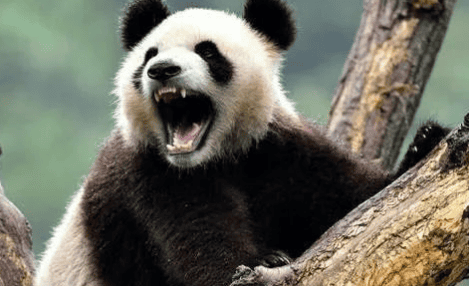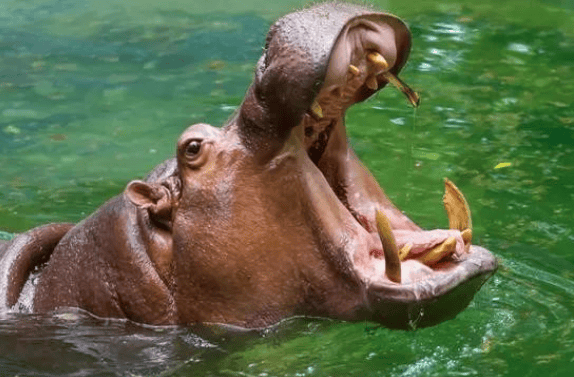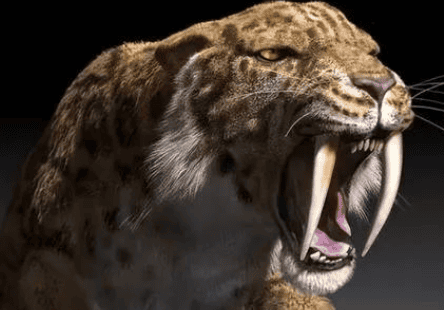The giant panda is definitely an animal whose combat capabilities are seriously underestimated. Of course, the reason for being underestimated is very simple: it looks too cute, and it always gives people the image of a "beautiful man eating bamboo". But don't forget, the giant panda is not a "cat", but a bear. It is a member of the Ursidae family like polar bears, brown bears, and black bears.

Although the giant panda's main food is bamboo, it can eat Bamboo is easier than us to chew cucumbers. This is due to its "good teeth" and bite force. In terms of bite force, some articles on the Internet say: The bite force of giant pandas is second only to polar bears. The article said: The bite force of the giant panda ranks fifth. But in fact, both of these statements are wrong.
So, how strong is the bite force of the giant panda? Where does it rank in the bear family? In comparison, what “level” does human bite force belong to? Do dental implants, the most common type of tooth restoration, have bite force? Let’s find out together.

What is bite force?
Bite force is simply the force released by teeth acting on an object. However, the functions of animals’ teeth are also different. For example, molars are mainly used to grind food, and canines are mainly used to grind food. They are used for hunting, the split teeth are mainly used for chewing hard food, and the incisors are mainly used for cutting off food.
However, strictly speaking, bite force refers to the force released by the cracking teeth of carnivores. For example, the spotted hyena, known as the "Bone Crusher", is often said to have a stronger bite force than a liger. Although this statement has been used by many people to refute rumors, in fact, compared to the bite force of cracked teeth, hyenas are indeed stronger than ligers, because the strength of feline teeth is mainly reflected in the canine teeth.
There are four main factors that determine the strength of the bite: the thickness of the teeth, the sharpness of the ends of the teeth, the opening and closing size of the mouth, and the strength of the muscles responsible for biting (mainly the masseter muscles, temporal muscles, etc.) muscles and digastric muscles), and the reason why hyenas have strong bite force is that their cracked teeth are thick and sharp, and the muscles responsible for biting are also very developed. This is determined by the food habits of carnivores. In the diet of hyenas Among them, the bones of animals account for a relatively large proportion, which gives them strong cracking teeth and bite force.
However, nowadays, when we talk about bite force, we don’t just refer to cleft teeth. For example, we would say that the hippopotamus has a strong bite force, but the hippopotamus is obviously a herbivore, and its bite force is very strong. The force value is actually the force released by the half-meter-long fangs. Due to the large opening and closing angle of the hippo's mouth, the long and thick fangs with sharp ends, the bite force released by its fangs actually reached 2500 pounds (1133 pounds). Kilograms. )

In addition to the bite force of the hippopotamus, we speak The bite force in is also used to describe the bite force of canine teeth. Canine teeth are the most powerful weapons of carnivores. They are also the longest and pointed ones among carnivore teeth. When we talk about the bite force of tigers and lions, we usually mean Its canine teeth. The stronger the bite force of the canine teeth, the deeper the teeth penetrate into the prey's body, and the greater the damage caused. For example, the saber teeth of the extinct saber-toothed tiger are actually upper canine teeth.
It is precisely because the bite force in spoken language includes various teeth, so many values do not match up. Moreover, when testing the bite force of animals, different tools are used, and the states of the animals when biting are different. (For example, some were very angry, and some just sucked it in), resulting in large differences in bite force values.

The bite force of the giant panda
Having clarified the definition of bite force, let's take a look at the bite force of the giant panda. The bite force of the giant panda also refers to the force released by the cracked teeth, and this is also the tool it uses to crush thick bamboo. According to zoologists’ bite force tests on bears, polar bears, the largest ursids in existence, are undoubtedly the ceiling of bite force. They can release a bite force of 996 pounds, approximately 452 kilograms, followed closely by It's the Kodiak brown bear, a brown bear second only to the polar bear in size. It can unleash a bite force of 850 pounds, or about 386 kilograms.
The third, fourth, fifth and sixth places are Tibetan horse bear (608 pounds), American black bear (500 pounds), Asian black bear (432 pounds) and sloth bear (397 pounds) respectively, and we are here today Let’s talk about the protagonist, the giant panda. Its bite force ranks seventh among bears, weighing 350 pounds, or about 159 kilograms.
The bite force of the same type of animal is actually determined by body size and food. Among bears, sloth bears and giant pandas are similar in size, with an average weight of about 100 kilograms, but the food of sloth bears It contains carrion, and carrion contains bones. 99% of the food in the giant panda's diet is bamboo. Although bamboo is hard, it is still much worse than bones, so its bite force is not second only to polar bears. Not even in the top five.
However, despite this, giant pandas still cannot be underestimated. First of all, they have an average weight of 100 kilograms, which is already the weight range of large carnivores; secondly, although giant pandas look bulky , but in the wild forest they can gallop at the fastest speed of 40 kilometers per hour; third, the average bite force of nearly 160 kilograms is already very strong in nature. In the dog world, pit bulls attack and kill people every year. , as a fighting dog, its peak bite force is only about 80 kilograms, which is only half that of a giant panda. Therefore, if it is bitten by a giant panda, breaking the bones is not a problem.
Therefore, the giant panda is a bear species that can be viewed from a distance but not played with. It is also an animal whose combat capabilities are seriously underestimated by many people.

What is the bite force of humans? Do dental implants have bite force?
As we said above, the bite force of animals refers to cleft teeth, and cleft teeth are exclusive to carnivores. Humans, as omnivorous animals, do not have cleft teeth. However, judging from the bite force in spoken language It is said that human bite force refers to the bite force of canine teeth, which are the sharpest teeth among us. The tiger teeth we often call are actually a kind of abnormal teeth of canine teeth.
Similar to cleft teeth, the bite force of any tooth is related to the four elements of bite force we mentioned above, body shape and feeding habits. In this regard, omnivorous humans are relatively weak because humans Although the body size is not small, with an average weight of 60 kilograms, the human mouth is not as pointed and long as that of carnivores, which limits the opening and closing angle of the mouth. In addition, the size, sharpness and muscle group of the teeth are not very developed. Together, the average human bite force is actually only 88 pounds, which is about 40 kilograms.
However, with a bite force of 40 kilograms, human teeth are enough to cope with most foods. Although they cannot directly bite bones, human brains make up for this shortcoming. We can use straws or even It is the hammer that pries the bones open and eats the tender marrow inside.
However, the biggest drawback of humans’ high-sugar diet is that even if they brush their teeth every day, dental disease still bothers most people. As the dental disease continues to develop, it will be accompanied by tooth loss. , so dentures have almost become a necessity for the elderly.
However, with the development and progress of medicine, dental implants have appeared. Dental implants usually use screws made of titanium or other materials to insert into the jaw bone to place a prosthesis or crown, which is then It is placed and firmly fixed there. Its advantage is that it is very beautiful, looks like real teeth, and has certain functionality. However, the bite force of dental implants is extremely limited. This is mainly because to release the true limit of bite force, you need to bite something hard. If you bite hard things with dental implants, the fine structure of the implant will be damaged.
Written at the end
Bite force is now an abused word, because almost any animal now has a bite force value, such as hippopotamus, snapping turtles, etc., but in fact On the other hand, the bite force is exclusive to the cracked teeth of carnivores. From this strict definition, the bite force of the giant panda ranks seventh in the bear family, not fifth or second only to the polar bear.
Strictly speaking, humans have no biting force, but if the force released by any teeth when biting is considered biting force, human bite force is considered to be at the level of "weak chickens", but , there is nothing we can do about it, and humans don’t need a strong bite force, just being able to chew the meat on the bones is enough.

 扫一扫微信交流
扫一扫微信交流
发布评论